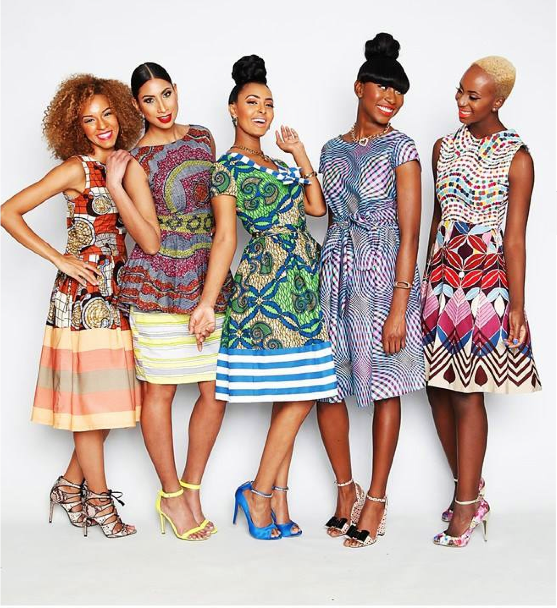Calling all fashion enthusiasts, culture aficionados, and lovers of all things African! Let’s dive into a fascinating world where tradition meets modernity, where vibrant colours blend with contemporary styles, and where heritage intertwines with innovation. Yes, you guessed it right; we’re talking about the mesmerizing realm of African fashion. And in this journey of discovery, one cannot overlook the pivotal role played by digital media platforms in shaping and showcasing the diverse tapestry of African couture.

But before we delve into the vibrant hues and intricate patterns of African fashion, let’s shine a spotlight on an unsung hero in this realm: UNESCO. The United Nations Educational, Scientific and Cultural Organization (UNESCO) stands as a beacon of support for the preservation and promotion of cultural diversity worldwide. Among its myriad endeavors, UNESCO champions the rich heritage of African fashion, recognizing its significance not just as an art form but also as a means of cultural expression, economic empowerment, and social cohesion. It’s recent report that was released in October 2023 is titled THE AFRICAN FASHION SECTOR: Trends, Challenges and Opportunities for Growth and it highlights the role of digital media in the transformation of fashion while mentioning a few key players in this space.
Now, let’s zoom in on the digital landscape, where platforms like the Jamila Kyari blog emerge as catalysts for change, elevating African fashion onto the global stage. Founded by the visionary Jamila Kyari, this blog serves as a digital oasis, where narratives of African fashion come to life, captivating audiences far and wide.
The allure of African fashion lies in its ability to encapsulate centuries of tradition while embracing contemporary trends with open arms. It’s a story of resilience, creativity, and identity, woven into every stitch and embellishment. Yet, for too long, the narratives surrounding African fashion remained confined within geographical boundaries, waiting to be unfurled onto a broader canvas.
Enter digital media platforms like the Jamila Kyari blog, which serve as bridges connecting the rich tapestry of African fashion with global audiences hungry for authenticity and diversity. Through captivating storytelling, vibrant visuals, and insightful commentary, these platforms transcend borders, dismantling stereotypes, and celebrating the richness of African culture.
What sets the Jamila Kyari blog apart is its unwavering commitment to authenticity and inclusivity. In a world often dominated by Eurocentric standards of beauty and fashion, Jamila Kyari proudly embraces the kaleidoscope of African identities, highlighting the beauty in diversity. From showcasing traditional garments worn by different ethnic groups to featuring emerging designers pushing the boundaries of innovation, this blog is a testament to the multifaceted nature of African fashion.
But it’s not just about aesthetics; it’s about impact. The Jamila Kyari blog goes beyond the surface, delving into the socio-economic implications of the fashion industry in Africa. It sheds light on the artisans behind the scenes, whose meticulous craftsmanship breathes life into every garment. It amplifies the voices of trailblazing designers who use their platforms to drive social change and economic empowerment within their communities.
In essence, platforms like the Jamila Kyari blog serve as digital archives, preserving the rich tapestry of African fashion for future generations. They document the evolution of style, from traditional garb passed down through generations to contemporary interpretations that redefine the boundaries of creativity. The blog’s virtual pages weave a narrative of resilience, innovation, and cultural pride, ensuring that African fashion remains a vibrant and integral part of the global fashion landscape.
But the journey doesn’t end there. As we celebrate the pivotal role of digital media in amplifying African fashion, we must also acknowledge the challenges that lie ahead. From tackling cultural appropriation to fostering sustainable practices within the industry, there’s still much work to be done.
This is where UNESCO steps in as a crucial ally in the fight to preserve and promote African fashion heritage. Through initiatives like the Creative Cities Network and the Intangible Cultural Heritage program, UNESCO provides a platform for dialogue, collaboration, and capacity-building within the fashion industry. By partnering with grassroots organizations, educational institutions, and government bodies, UNESCO empowers local communities to safeguard their cultural heritage while embracing innovation and sustainability.
In the digital age, collaboration is key. By forging partnerships between digital media platforms, cultural institutions, and grassroots organizations, we can amplify the voices of African designers, artisans, and storytellers on a global scale. Together, we can ensure that African fashion continues to inspire, empower, and unite people from all walks of life.
So, the next time you find yourself scrolling through the vibrant pages of the Jamila Kyari blog or exploring the myriad hues of African fashion on social media, remember the pivotal role that digital media plays in shaping our perception of culture and identity. And let’s continue to celebrate the rich tapestry of African fashion, not just as a trend but as a timeless expression of creativity, resilience, and heritage. How to support? Start by subscribing for the newsletter and stay updated!
Fashion is more than just clothing; it’s a reflection of who we are, where we come from, and where we’re headed. And with platforms like the Jamila Kyari blog leading the way, the future of African fashion shines brighter than ever before.










